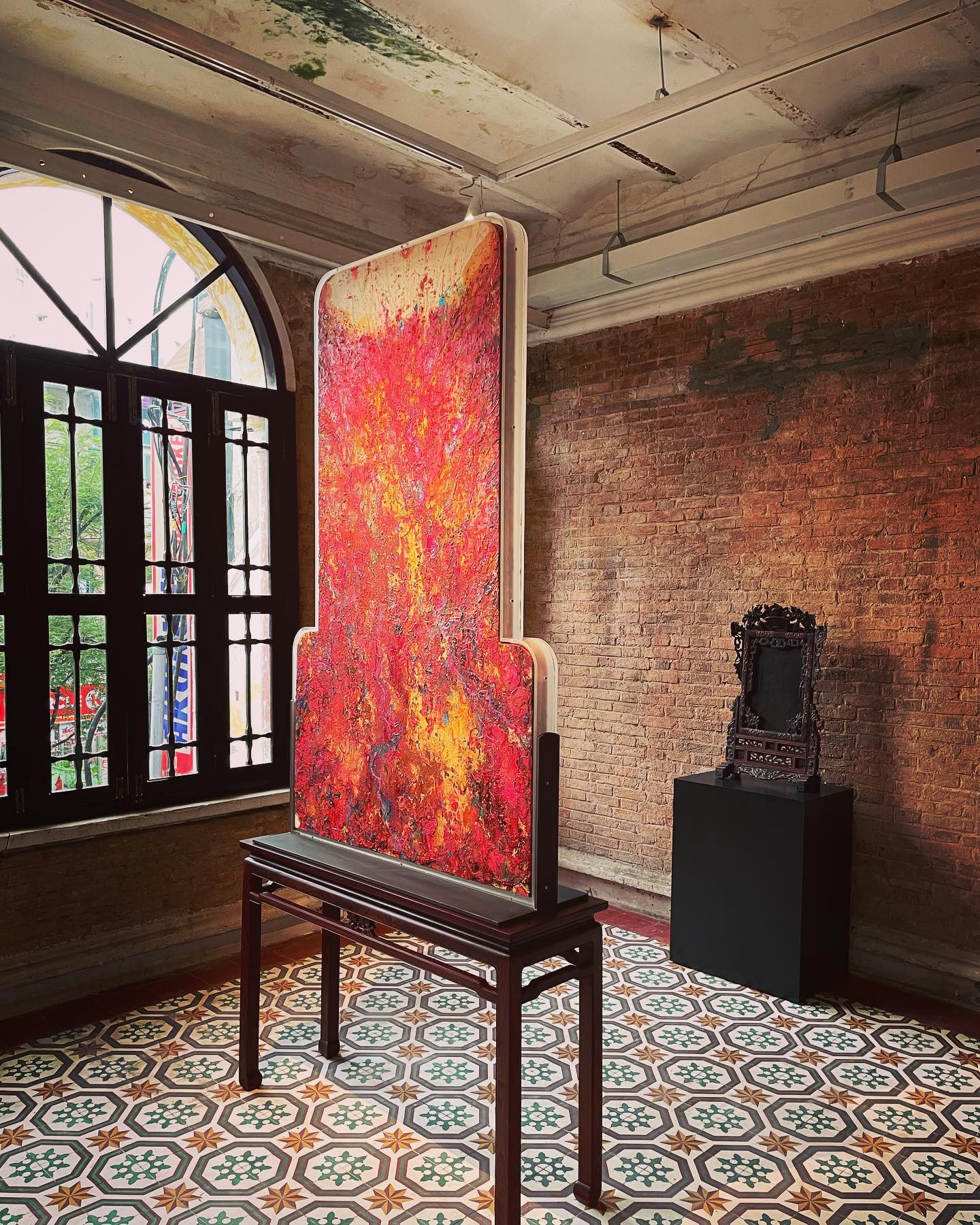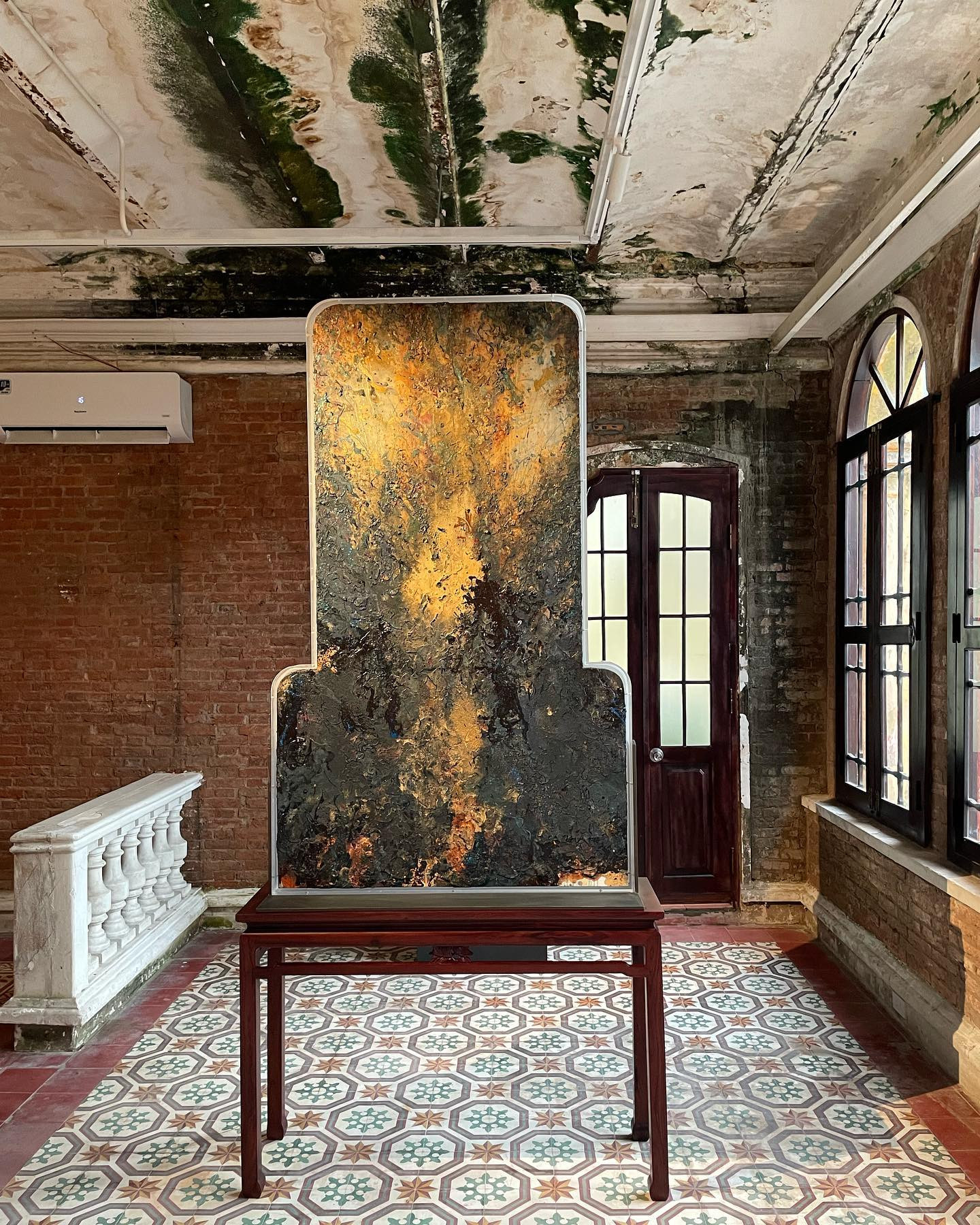Turning Silk into Stone
According to a Chinese legend, Xi Lingshi, the wife of the 3rd Chinese Emperor Huang Di, sometime around 2640 BCE, was having tea when a cocoon fell in her cup and unraveled in the liquid beverage. She marveled at how strong and beautiful the threads were and so she harvested thousands of cocoons to spin a silk robe for her husband. Silk worms are the most wondrous of nature’s creatures. Silk is among the strongest materials made by nature, almost five times the strength of steel. That such a tiny invertebrate can produce matter with properties comparable to metal or stone is miraculous. Strength is not, however, what artists or art lovers usually associate with silk. Instead, it is prized for its refinement, delicacy and transparency. Artists have been painting on silk for millennia as well, valuing its quality to absorb pigments quickly and evenly, to capture the delicate light that may shine on it for a brief moment. Silk’s sheer surface, rendering all forms flat and fluid makes it the preferred medium for watercolorists. Hà Mạnh Thắng, however, pushes the medium further beyond its usual capabilities. His new series, Reflections, an iteration of his Circle of Time paintings, explores some of the extraordinary qualities of silk, in this case, its remarkable ability to resemble stone.
Thắng’s newest paintings ask us to reconsider silk’s materiality and offer a paradox. How can silk be both transparent and opaque? How can it be both light as a feather and look as heavy as a stone? The dual nature of the universe reveals itself like the opposite forces of yin and yang. And, like scholars rocks, Thắng’s paintings offer us a means of contemplating the world in microcosmic form.
This series, like its title, prompts reflection in many senses of the word. In one sense, reflection can mean the return of light from a body or surface, a phenomenon seen when gazing at a mirror or a pool of water. In this case, light is not absorbed, rather it is refracted and bounces back towards us. It signifies a return. If we consider them returns in that way, Thắng’s paintings could suggest a look back to past practices, archaic forms of art making where form and material merge and when nature takes over the process of creation.
Reflection carries another meaning in Thắng’s paintings, and in this sense on the part of the viewer. In admiring the surface of the canvas, we may find ourselves gazing into the nooks and crannies that make the texture of the fabric and ponder its materiality. Thick layers of pigment vie with each other, creating peaks and valleys, like a landscape made of oil and acrylic. Reflection in this case equals a thought process, a kind of meditation on the past, present and future of things. As we look deep into the painting, however, we may be jolted out of this mode of contemplation when we discover that its supportive base is silk, and just when we realize that the delicate textile carries this heavy load of paint, we encounter a depth of vision and a ray of light shining through the fabric, between the craggy knolls.
Reflection carries an additional meaning, that of suggestion or evidence. In this sense, Thắng’s treatment of the canvas is not only suggestive of patterns found in minerals but also acts as a means of transformation and remediation whereby silk becomes stone. The true transformative nature of these paintings lies in its duality, its double identity, a tandem configuration of the obverse and the reverse, recto verso but with the impossibility of knowing which is which. Upon approaching the erect canvases, one is compelled to look at both front and back. Convention dictates that the “right” side of the work is the one on which the paint is applied. Thắng has it otherwise. Each side of the painting has its own merits, and reveals itself in a different light, quite literally. On one side, the thick layers of oil seem impenetrable and invite us to glance only at the surface material. All it takes is a pivot to the other side to be transported to another world, where light shines through the silk like a flashlight beaming through and against the rocks in a sunlit cave. Set in a plexiglass frame, however, the effect is more like a blur than a direct ray of sunshine. The tone is more atmospheric, like light through clouds and vaporous air. Thắng has created these reflections in different hues resembling the colors of semi-precious stones such as jade, malachite, jasper and tiger’s eye. Each is inscribed in the back with a poem from either Tang and Song Dynasty China or Le and Nguyen Dynasty Vietnam. The words “kìa non non, nước nước, mây mây,” or “moutains beyond mountains, rivers beyond rivers, clouds beyond clouds,” a line from a poem by Chu Manh Trinh (1862-1905) a poet from the Nguyễn Dynasty, frame the exhibition as standing between the earthy and celestial realms. Propped on tables like ancestral tablets, these 16 poems that stand before us in 16 majestic paintings that invite us to reflect on the materiality of silk, the gravity of painting and the cycles of time. After these tumultuous past two years that seemed to upend time and send the world into chaos, Thắng’s paintings offer us an opportunity to recalibrate, to restore the cosmic balance and bring into focus the five elements of nature: water, fire, wood, earth and metal. The poetry behind the work– literally and figuratively– offers a much needed solace at this moment in history.
Dr. Nora A. Taylor
School of the Art Institute of Chicago


